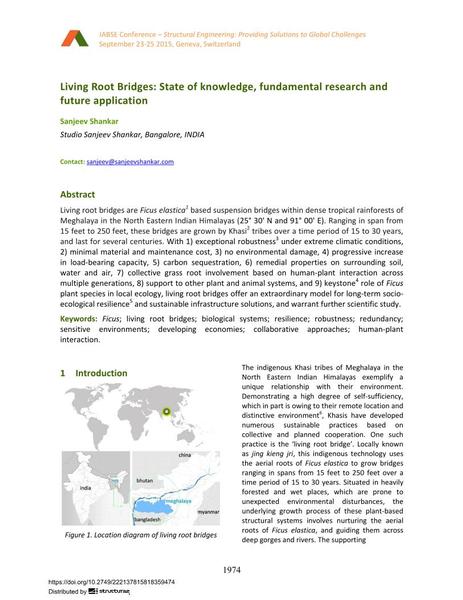|
Abstrakt:
|
Living root bridges areFicus elastica1based suspension bridges within dense tropical rainforests of Meghalaya in the North Eastern Indian Himalayas (25° 30' N and 91° 00' E). Ranging in span from 15 feet to 250 feet, these bridges are grown by Khasi2 tribes over a time period of 15 to 30 years, and last for several centuries. With 1) exceptional robustness3 under extreme climatic conditions, 2) minimal material and maintenance cost, 3) no environmental damage, 4) progressive increase in load-bearing capacity, 5) carbon sequestration, 6) remedial properties on surrounding soil, water and air, 7) collective grass root involvement based on human-plant interaction across multiple generations, 8) support to other plant and animal systems, and 9) keystone4 role ofFicusplant species in local ecology, living root bridges offer an extraordinary model for long-term socio- ecological resilience5 and sustainable infrastructure solutions, and warrant further scientific study.
|


